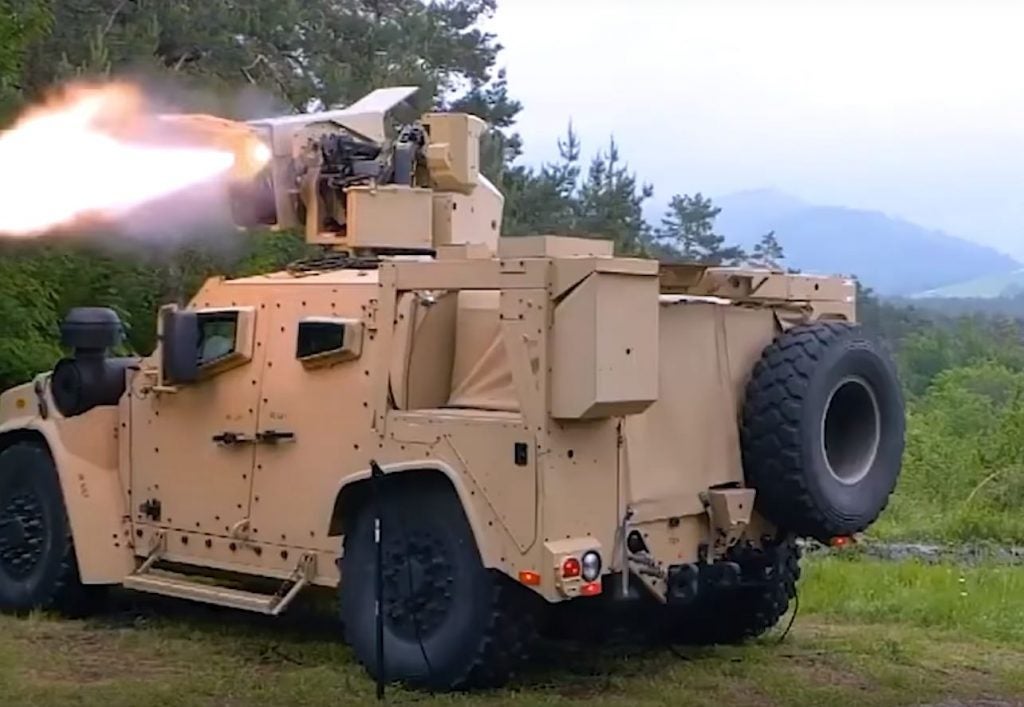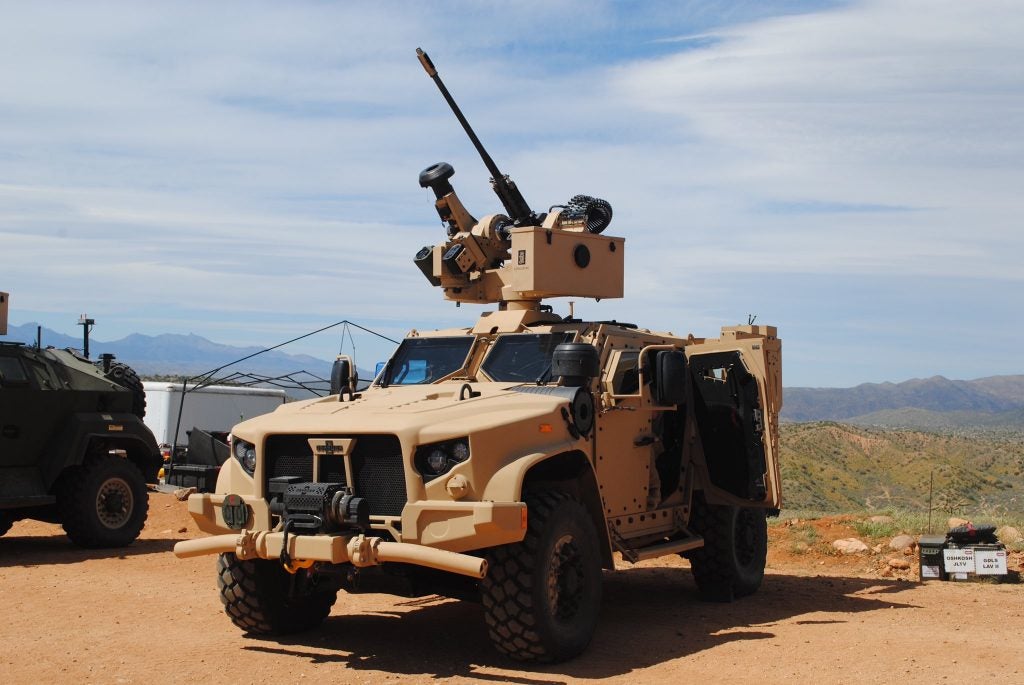Spike LR and Javelin test-fired on JLTV
Over the course of June, Oshkosh’s Joint Light Tactical Vehicle (JLTV) had two different anti-tank missiles (ATGMs) test-fired from remote weapon stations. The first was Spike LR which was integrated for Slovenia who is currently the only nation outside the US to have adopted JLTV. The missile was launched from a Rafael’s Samson Mini MLS remote weapon station which combines a 12.7mm or 7.62mm machine gun with two Spike LR missiles.

Spike is one of few ATGMs with a man-in-the-loop ability, being able to engage targets without needing direct line-of-sight. This is achieved by data linking what the missile seeker sees back to the launcher so the operator can select a target once the missile has been lofted. Vehicles like JLTV cannot survive much more than small arms fire, so being able to engage targets without exposing the launch vehicle greatly improves chances of survival.
Lithuania is another potential customer for this system, already having Spike integrated on their Vilkas IFVs and having shown interest in purchasing JLTV.

The second missile tested was Javelin, the preferred choice of the US military. In this case, the missile was integrated onto a Kongsberg Protector LW30 remote weapon station that combined a single Javelin missile with an M230LF cannon. This is the same medium-velocity 30mm cannon that has seen extensive use on the AH-64 Apache helicopter and offers a remarkable amount of firepower for such a light vehicle. In comparison to Spike, however, Javelin lacks the ability to engage non-line-of-sight targets. This limits its usefulness in urban environments and against peer armored forces. But peer conflict isn’t what Oshkosh had in mind, instead, the target audience was the special forces community.
In Iraq and Syria members of US special forces found great utility in JLTVs bigger brother, M-ATV, for its ability to shrug off small arms fire and survive IED strikes while remaining decently mobile. What M-ATV was unable to provide was medium caliber firepower, which is precisely what this turret system intends to provide.

